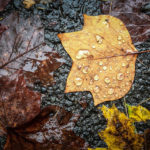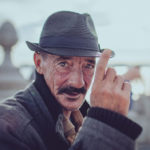They say a picture is worth a thousand words. From a photographer’s standpoint, it may also be worth several important photographic lessons. Joe McNally reveals the many basic photography techniques found within his photographs:
Using a Nikon 50mm f/1.4 lens and available light, McNally captured two seemingly straightforward images of Mexican cowboys or “charros.” But as McNally put it,
“One very simple photograph can involve numerous photographic lessons.”
Within McNally’s images we discover some rudimentary teachings relating to color theory, the rule of thirds, image balancing, and subject placement. These elements may thoughtfully be put into motion before the shutter release is pressed. But after practice in the field, they may also start to become second nature.
“I think lots of photographers look at pictures later and all of a sudden realize what happened in the field. I think it’s just a natural process as you’re moving and shooting in the field. You don’t absolutely overtly think about everything that you’re doing.”
Color Theory
In photographs, warm colors always resonate well with cooler ones. The warm golden glow of the cowboy’s face works particularly well in contrast to the striking blue of the sky. In this particular image, the colors are quite complimentary, adding to the visual appeal of the image.
Rule of Thirds
The rule of thirds can be applied horizontally and vertically to images to ensure a dynamic balance of frame. In McNally’s portrait, the cowboy is lined up on the first third while the rest of the image is clean blue sky, producing a simple and graphic image.
Foreground and Background Use
The detail shot of the cowboy’s hands demonstrates another technique when thinking in terms of rule of thirds. An image can be anchored with a point of interest in the foreground, while a second item of interest holds the background. The close-up detail of the hands is balanced by an out-of-focus cowboy in the background, also adding information.
Subject Placement
The placement of the subject is something all photographers have to think about. But if you’re a publication photographer, like McNally, you may need to think a bit differently. Printed publications often have a fold, known as the “gutter”, which will crop back a bit of the image. Avoid putting the item of interest in the middle of your image.
Although McNally’s images cover some of the most important and basic photography lessons, they’re certainly not the only guidelines for improving a photograph. What other photographic teachings have you come to use intuitively?
Like This Article?
Don't Miss The Next One!
Join over 100,000 photographers of all experience levels who receive our free photography tips and articles to stay current:








The Nikon D300 DX sensor crops at 1.5x. So using a 35mm to achieve the look of a 50mm (on a full frame camera) is great. In easy mathmatics: multiply your focal length by 1.5 to figure out what you would see on an FX. Another example: 50mm x 1.5 = 75mm Your 50mm will actually be like using a 75mm. Check out our other posts on Crop Factor! Hope this helps.
I have this 50mm lens, but use it on my D300, so there is a crop factor. How do you overcome this.
I also own a 17-70mm lens 2.8-4. Would you recommend a setting at say 35mm would would give me an approx 50mm equivalent.